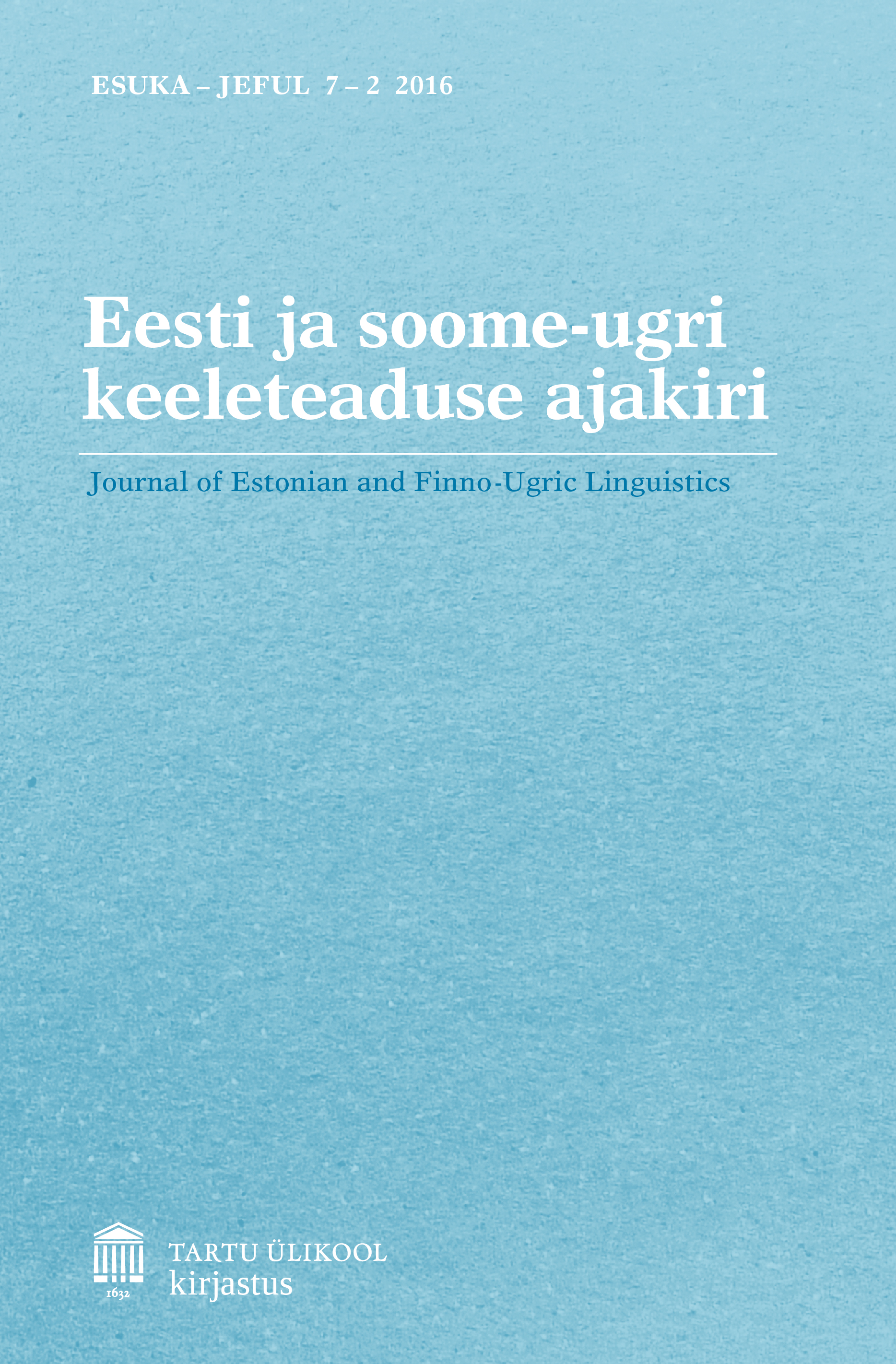Modaalkonstruktsioonid eesti ja soome palvetes
DOI:
https://doi.org/10.12697/jeful.2016.7.2.03Keywords:
viisakus, direktiiv, küsimus, modaalsus, eesti keel, soome keelAbstract
Kokkuvõte. Siinses artiklis vaatleme modaalverbide ja neile funktsionaalselt lähedaste väljendite kasutust eesti ja soome palvetes ja küsimustes. Mõlemas keeles on palju sarnase algupäraga modaalkonstruktsioone, kuid nende funktsioneerimine palve ja küsimuse pehmendajatena on osaliselt erinev. Materjal pärineb diskursuse täiendamise ülesandest, milles emakeelsetel keelejuhtidel paluti kirjutada, mida nad kirjeldatud olu korras teeksid. Modaalpredikaatide võrdlus näitab, et nende esinemise üldsagedus palvetes on eesti ja soome keeles enam-vähem võrdne, kuid soome keeles on nad sagedamini konditsionaalis. Küsimuste pehmendamisel on konditsionaali mõlemas keeles märgatavalt vähem kui palvete puhul. Artiklis vaadeldakse ka sagedamate modaalverbide (saama/saada, võima/voida jm) esinemist eri situatsioonides.
Abstract. Birute Klaas-Lang and Renate Pajusalu: Modal constructions in Estonian and Finnish requests. The aim of this article is to compare Estonian and Finnish modal verbs and other modal predicates in requests and questions. Written discourse completion tasks were used as a method. Native speakers were asked to write what they would say in 10 different scenarios. The scenarios were constructed so that they provided maximum variety of context for the requests and questions (from institutional to colloquial and from written to oral). The article concentrates on modal predicates, many of which have the same origin in Estonian and Finnish but are used somewhat differently. The overall number of modal verbs used to soften requests and questions was approximately the same in Estonian and Finnish. In the Estonian data, the modal constructions of main acts were in conditional form in 58% of the cases, in the Finnish data in 84% of the cases; thus in the Finnish data the conditional is much more frequent. The typical modal verb in the Estonian data is saama ‘get’, whereas in the Finnish data it is voida ‘can’. In the Estonian data some variation is possible: Estonian võima ‘can’ occurs as well, despite being considerably less frequent. In the Finnish data saada ‘get’ was present only in the sense of acquisition or success which is not included in the current table. Other modal constructions were represented in the data surprisingly evenly in both languages. Only oskama/osata ‘can, know’ showed a slight difference, being noticeably more frequent in the Estonian questions than in the Finnish ones. The article also examines the modal predicates in other response texts. A tendency to use more speaker-oriented modal verbs expressing mainly desire and obligation can be observed in the Estonian data. On the basis of modal verbs only, it would also be possible to conclude here that in the Estonian requests the speaker’s obligation is expressed more frequently (I should send the abstract, need to submit the certificate, etc.).
Keywords: politeness; directives; questions; modality; Estonian; Finnish


